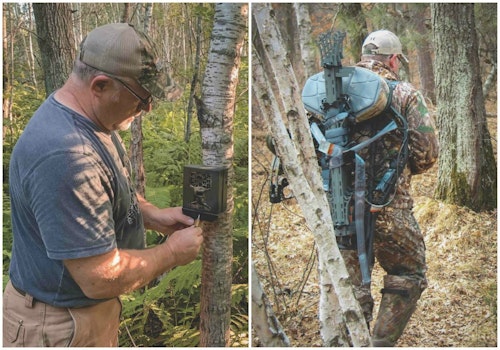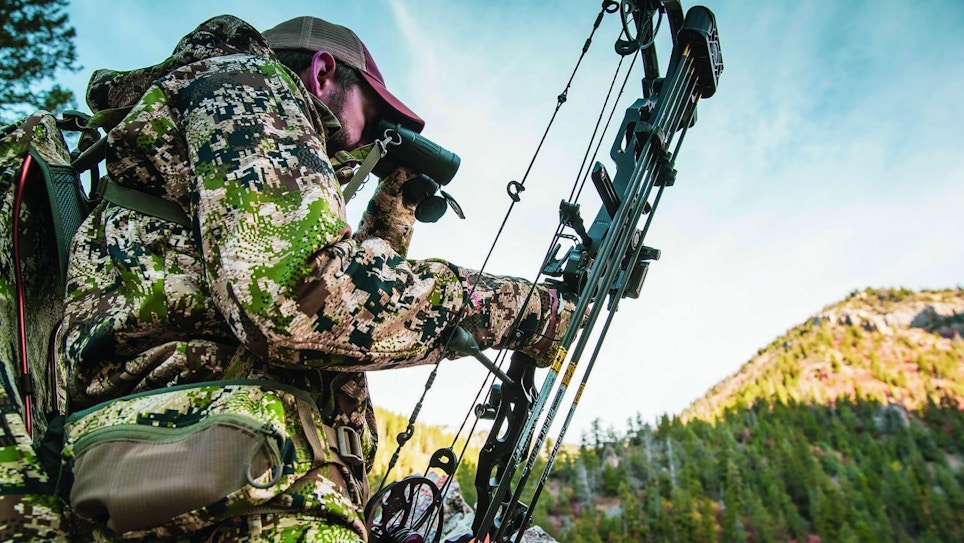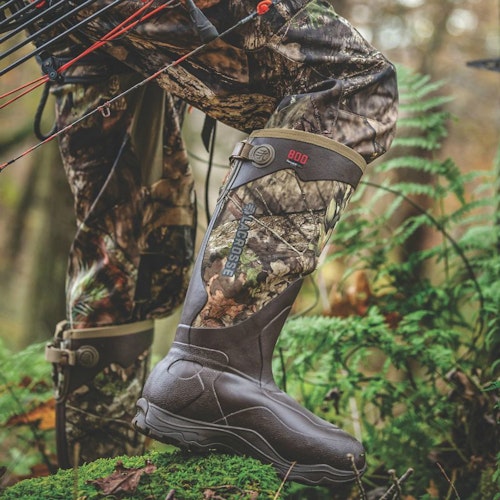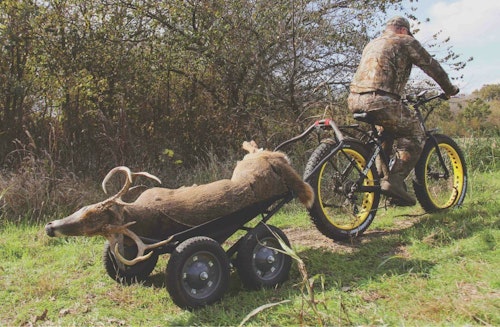Take your mind back to the mid-1990s, the early days of outdoor television channels. Imagine a deer hunter in Michigan, New York, North Carolina or Florida. He’s sitting on the edge of his seat watching some soon-to-be hunting celebrity shoot a big buck in Iowa, Kansas or Illinois. And he’s thinking, “I’ll never see a buck like that around here in my lifetime.”
There were more than a hundred thousand like him, and what was a curiosity in the 90s would become a movement just a decade later. Today, scores of whitetail hunters travel to the states that have become known as “destination states” among the throngs of hunters who travel outside their home state to hunt whitetails each year.
I’ve watched this movement in person and been on the front lines for years. I’ve blogged about it and wrote the book “The Freelance Bowhunter: DIY Strategies for the Travelling Hunter.” Others have grabbed onto the train as well. A group of guys started the YouTube channel The Hunting Public to chronicle their DIY public land hunting endeavors and watched it grow to 200,000 subscribers and 40 million views in just over two years. This movement is on a roll and doesn’t show any signs of slowing down.
Some states have increased the number of nonresident tags available to accommodate the growth of the traveling hunters; others make them wait in line to accumulate points. Several states have significantly increased the cost of nonresident tags to take advantage of the demand. Iowa tops the list of destinations, and despite the costliest nonresident tags and licenses, has long lines of hunters waiting to get in. For the best archery zones in Iowa, a hunter will have three to four years of applications and about $800 invested in tags, licenses and preference points. For a whitetail deer tag.
But the tags aren’t the most expensive part of this endeavor. These nomadic hunters need gear. Specialized gear. And they are very hungry for information. While some nonresident hunters use the services of an outfitter, most are not willing to pay for them, or prefer the excitement and challenge that comes from doing it themselves on public land. These hunters do not pay up and use a week or two of vacation to travel and shoot does and forkhorns — they are loading their trucks and heading down the road with hopes of shooting a bigger buck than they’re likely to encounter at home.
That’s where retailers come in. Shops that can offer them information and the specific products they need can capitalize on this movement. Let’s take a look at some of the equipment they may run across your scanner.
Lightweight Stands and Sticks
Hunting on a deadline, such as a week’s vacation, means hunting aggressively. It often means the move of a treestand with the input of any small nugget of new information. A trail cam photo or buck sighting may not cause you to move your entire setup when you have the whole season to hunt, but traveling hunters need to roll with the punches and react immediately to changes. We opt for light, packable gear. We value a balance of weight and comfort with the emphasis on lightweight and uncomplicated ease of setup. Light, strap-on climbing sticks are popular since many public properties do not allow the use of anything screwed into a tree.
Climbing stands are popular with some hunters, but the trees in which they can be used are often limited in some locales. Some questions of qualification are needed before you sell someone a climber. I always have a pop-up ground blind along, and I suspect most others do as well.
Because of the typical long walks associated with penetrating public lands, harnesses must be simple and minimal; backpacks have a minimum of essentials. Things such as bowhangers and hooks are nice, but trend towards those that can attach to something without screwing into the tree.

Trail Cams and Camera Protection
The most important ways of gathering information during the ever-changing flow of the hunt involves trail cameras. It’s common for me to have four or five cameras in the woods during a week-long hunt, and I’m checking them every day. Along with hunting pressure on public land comes increased potential for theft, so not only do DIY hunters need the cams, but they also need ways to protect them. Cables are one way, but they do not really solve the real problem — the loss of information contained on an SD card. This intel can at times be far more valuable than the replacement cost of the camera. Steel safes, originally intended to protect cameras from marauding bears, keep the cameras and the photos safe.
Boots
High-quality footwear is critical to a successful hunt. Few public lands allow the use of motorized vehicles, and the savvy hunters know that they must get away from the crowds to be successful. That typically means long walks through every kind of terrain. Crossing small waterways, muddy areas and thick cover laces with wait-a-minute vines are a normal part of most days. Boots must be waterproof, durable and comfortable. Those with sturdy lowers and neoprene uppers have risen to the top of the choices among DIY hunters.
Electric Bikes
Unless you’ve been living in a cave, you are aware of the growth in e-bikes for hunting. The growth in use among DIY traveling hunters is unprecedented. When first introduced to them, I was very skeptical. I felt the price would be a huge barrier and didn’t really see the value of riding over walking in most situations. Then I tried one. Then I bought one. Then I became a dealer of Bakcou electric bikes. The advantages are many, including minimizing of scent and quick, silent traveling.
They are a game changer for the public land hunter where they are legal — and that’s the part that’s a little weird. The growth has been so quick and so profound that state game departments are grappling with the decisions on how much these tools will be allowed. At this time, bikes with motors of 750 watts and less are not considered motorized vehicles on federal lands, and many states have adopted that standard. But this is a very general interpretation, and things are changing in severalstates. If you stock these bikes, you’ll need to keep up on the regs.
Lures and Scent Control
The traveling DIY hunter has a sense of urgency in everything he does, and that includes an increased reliance on lures and lure dispensers. It’s hard to find a better way to inventory bucks in the area than using a scrape dripper with fresh scent in front of a trail camera. Public land hunters are adept at using them and relying on them, particularly during rut hunts (which includes the vast majority of DIY hunts in the Midwest).
This sense of urgency also means an increased reliance on scent-killing products that minimize human intrusion and scent signature. Hunting on a deadline often means aggressively pushing the edges of wind currents and stand locations. Traveling hunters are big consumers of scent killing sprays and ozone producing units.
Clothing Concerns
You climb out of your truck in the early-morning darkness and the sub-freezing cold hits you in the face. You’re about to walk a mile over hill and dale and then sit still for five hours. What are you going to wear? This is a decision we have to make every day. Layering is the standard, and knowing which layers to use when is the way you win friends and influence sales. Merino wool base layers are popular because of their ability to keep in warmth even when damp with sweat. Mid-weight layers come next, and then, for long sits on stand, an outer layer that deters wind and snow or rain is essential. The more packable this stuff is, the better hunters will like it.
Vests and puffy jackets are popular for varying temperatures, and a good waterproof outer layer that can be stuffed into a backpack will save many hunts. Everything must be quiet! Once you’ve lost an opportunity to shoot a deer by drawing a bow in an outer shell that’s noisy when cold, you’ll never do it again. Know what works and pass this important information along to your customers.
I’ve found that many hunters are somewhat loyal to specific camo patterns until they are headed on a road trip with a lot of time and money invested. Then they readily prioritize function over fashion.
Gear for Offbeat Strategies
The nature of these DIY road trips causes many hunters to think outside the box when it comes to strategy. While picking out the right tree and sitting patiently in a stand will always be the number one way to shoot a whitetail on public property, many hunters also employ some off-beat tactics in order to be mobile and strike quickly. This has caused a growth in the use of ghillie suits for hunting on the ground. Hunting from the ground may mean a natural ground blind of sticks and leaves, or it might mean plopping down on a fallen log or even sneaking through a bedding area at midday. More and more traveling hunters have a ghillie suit in the truck for just these situations.
Tree saddles have made a significant comeback in the past couple years. These allow the hunter to go up the tree and hang in a seat. They’re certainly more mobile than the traditional treestand and a lot less weight to lug around. It remains to be seen how much traction this will get, but I can tell you the booths at the most recent ATA show that offered these devices were some of the busiest places in the building.
Information
Our traveling hunters devour every nugget of information they can get their hands on. Anyone traveling to a new destination needs intel; the shops that have someone who really knows the ropes will be their hero. The first time I went to North Dakota, I discovered every tree in sight was too small or crooked to place a hang-on stand. If I’d had someone to tell me that I should be hauling a ladder stand and a ground blind, I would have been very grateful to them. By the same token, don’t sell a climber to someone headed on a hunt to Montana, where they’re likely to be hunting from 300-year-old cottonwoods as big around as a Volkswagen.
Knowledge is the key to understanding the needs of the DIY public land hunter, and the best knowledge comes from experience. If you don’t have someone on staff who has done some road trips, it might not be a bad idea to send someone on a couple so they can relate their experiences.
Any way you can help customers with research will enhance the relationship. Resources such as listings of state DNR websites, online mapping tools and nonresident licensing knowledge will make you a hero. When the traveling hunters walk in the door, understanding and meeting their needs will create trust, and there are few better ways to earn a lifelong customer than earning their trust.








